Polkadot at Consensus 2025: Demos, DAO talk, and new audiences
Consensus 2025 leaned into real-world adoption with a crowd that cared about practical use cases and tangible outcomes. Polkadot showed up with demos, onboarding, and a message that kept things grounded.

What you can expect
- What we showcased at the booth, and who was there
- Key takeaways from Dave Sedacca’s talk
- Photos and social posts from the event
- A look at what’s next
Two demo tracks, one busy claw machine, and a different kind of crowd.
Polkadot returned to Consensus in 2025 with a focused presence built around live demos, onboarding, and meaningful conversations. Unlike the builder-heavy vibe of ETHDenver, Consensus brought a different mix: enterprise teams, investors, students, and people looking for practical blockchain solutions.
The goal this time wasn’t just exposure. It was about connecting with a new audience and giving ecosystem teams space to show what they’re building.
A booth built around real use cases
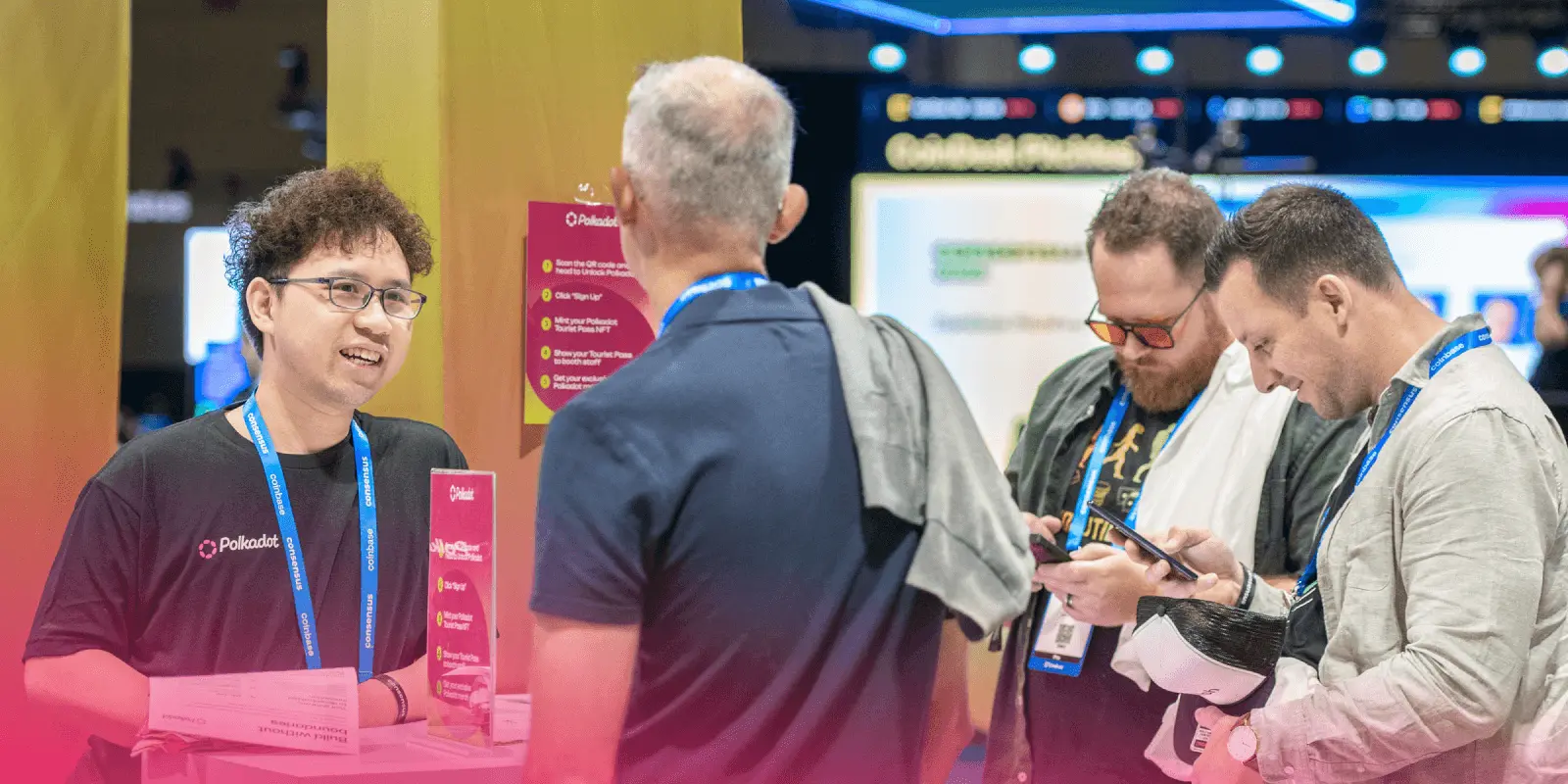
The booth centered on two major themes: enterprise solutions and DAO innovation. These storylines helped guide visitors through live demos, hands-on activities, and conversations with ecosystem teams working on a range of real-world applications.
To keep things organized and give everyone visibility, teams were scheduled into time slots at two demo stations. This format helped create more focused interactions and gave each project a clear platform to share what they’re building.
Participating teams: Apillon, Atmos, Aventus, Distractive, Feooh, Hyperbridge, Hydration, Kylix Finance, Magenta, Mythical Games, OriginTrail, Parity Technologies, Polkadot Ambassador Fellowship, Polkadot Blockchain Academy, Scytale, StellaSwap, The Kusamarian, TVINN, Velocity Labs, Web3 Foundation, and WebZero.
Here’s how one participating team described the experience:
“I think this type of conference is very much known for dealmaking. So absolutely a lot of TradFi guys, a lot of institutions, a lot of asset managers, which makes it really easy to set up good quality meetings.” — Jonathan Boyd, Velocity Labs
The booth featured a custom-built claw machine that kicked off the onboarding experience. Designed in collaboration with AirLyft, it served as the first step in a guided onboarding flow. Attendees scanned a QR code, minted an NFT, and completed simple quests to claim DOT tokens. The flow offered a practical and engaging way to introduce people to the Polkadot ecosystem, and it's a format that can be scaled for future events.
"Oh, definitely we stand out far from other booths...The claw machine, everyone was obsessed with it."— Charlie Riedel, Mythos Foundation
The flow was built to be scalable, with learnings that ecosystem teams can apply at future events. Some attendees even completed quests on-site, giving them a hands-on feel for how Polkadot-powered apps work.
Featured speaker: Dave Sedacca
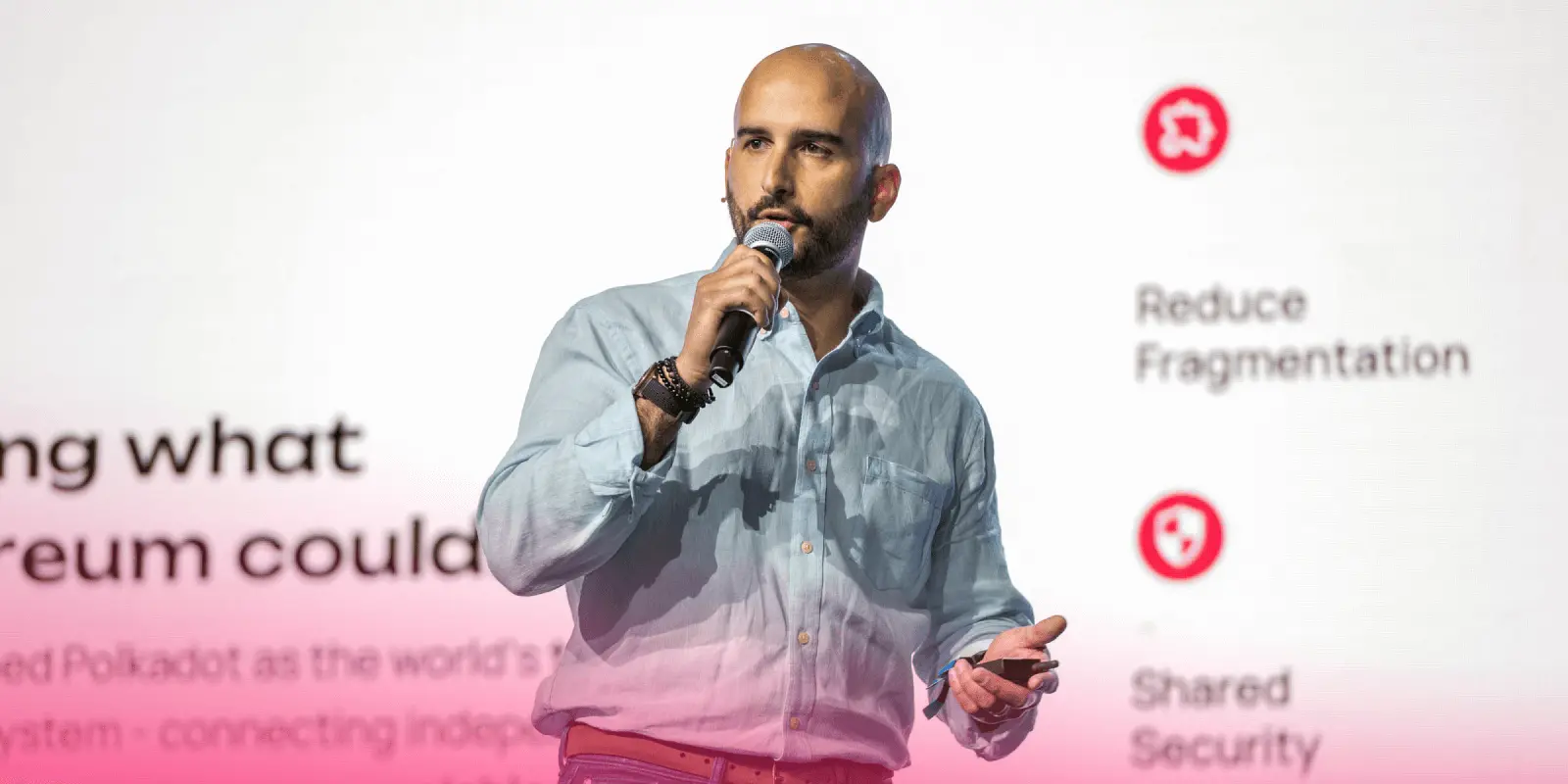
Dave Sedacca, who leads Finance and Treasury at Parity Technologies, spoke at the Consensus 2025 Protocol Village. His session, titled “Polkadot Beyond the Noise: Proven Builders, Measurable Adoption, Unmatched Efficiency,” focused on how Polkadot is delivering real-world value across enterprise and Web3 use cases.
He walked through:
- Why Polkadot is purpose-built for internet-scale infrastructure.
- The shift from Polkadot 1.0 to 2.0, including faster validation and a more flexible blockspace model.
- Key performance metrics comparing Polkadot to other networks in decentralization, speed, and cost.
- Adoption across verticals like gaming, DePIN, and data.
- JAM as the future of decentralized compute.
“Everyone talks about Web3, but it's really mostly theoretical. Polkadot is making it real.” — Dave Sedacca
His talk helped anchor Polkadot’s presence at Consensus in tangible outcomes, not just vision.
What it looked like


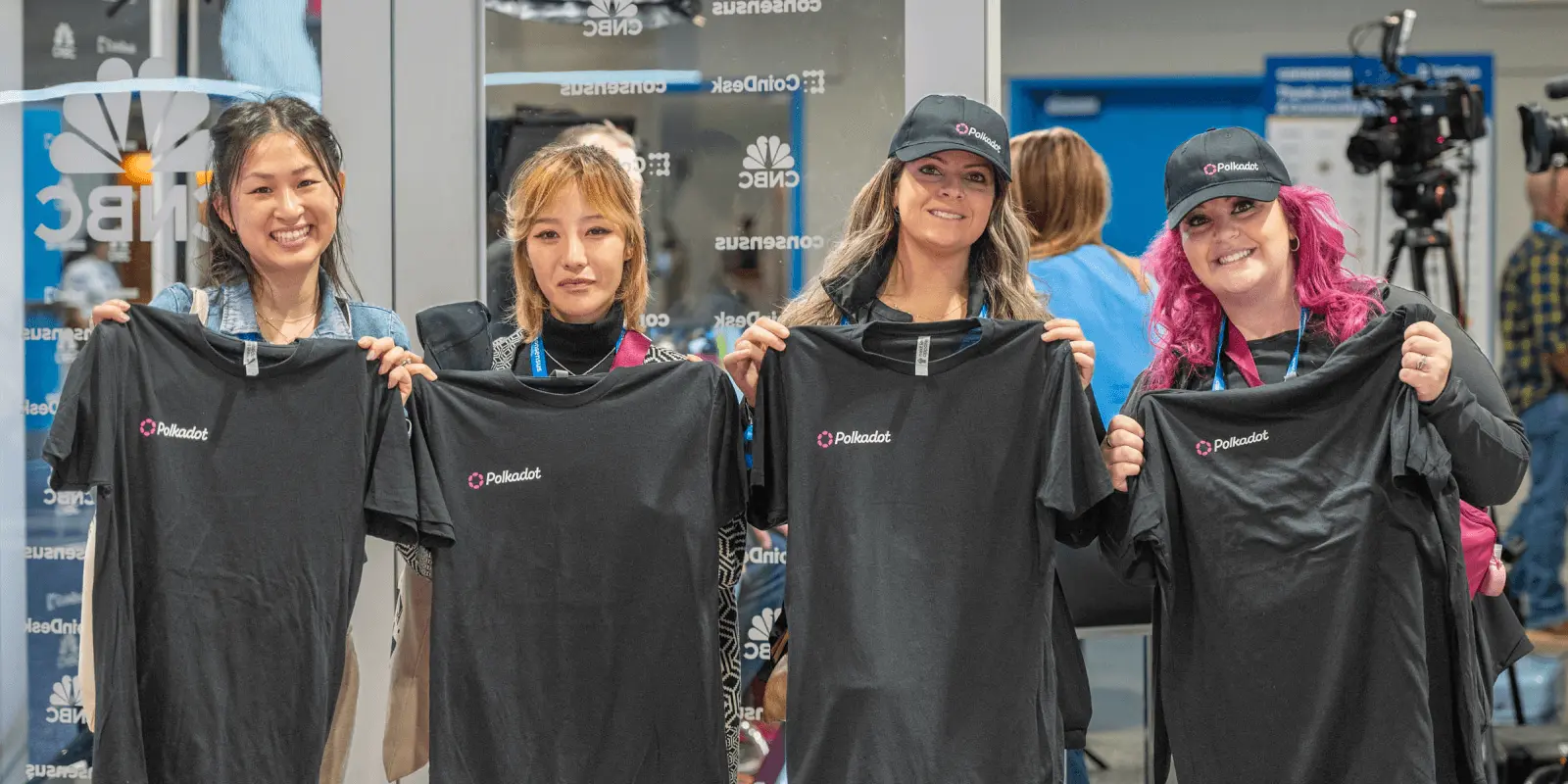
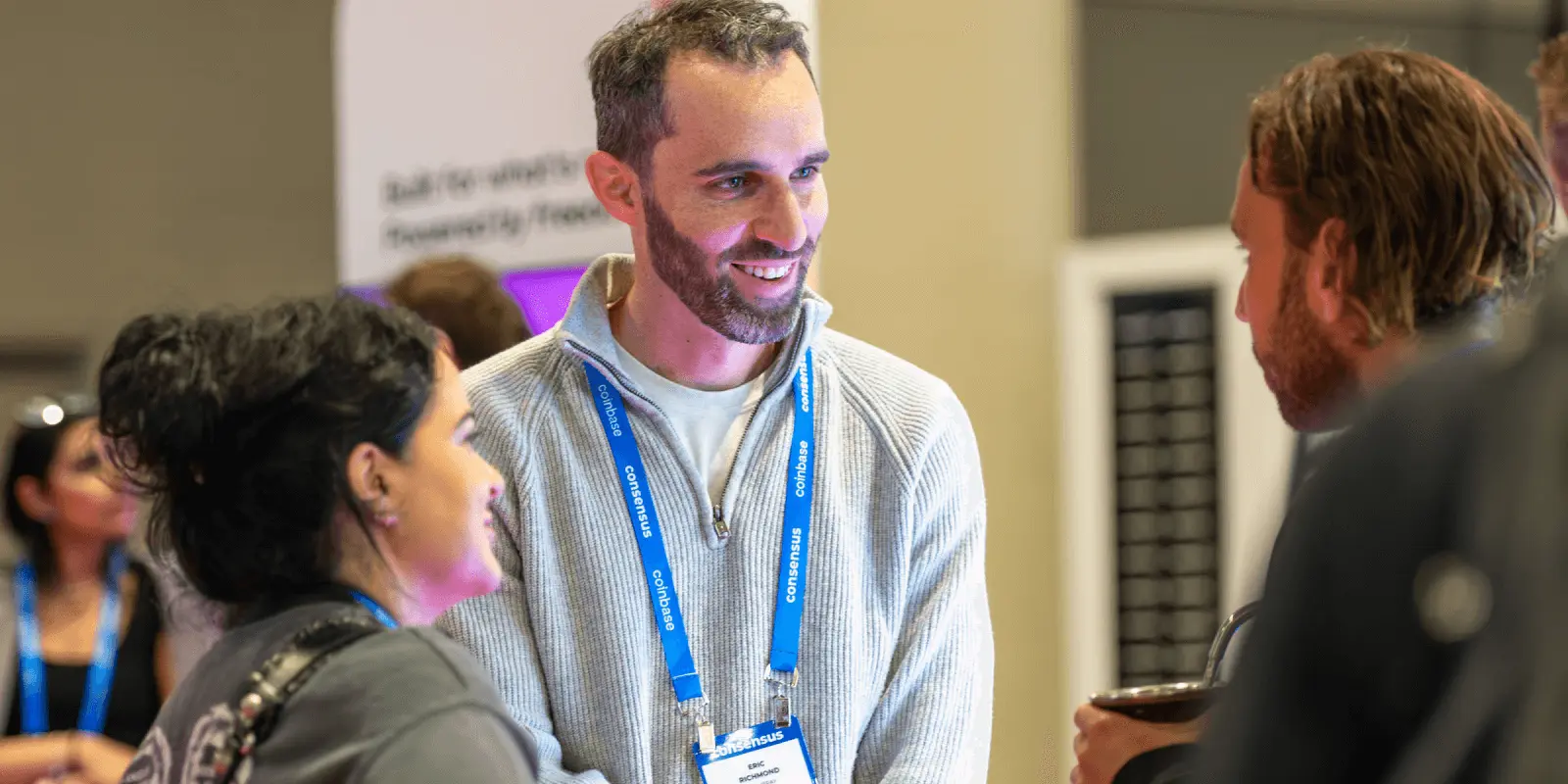
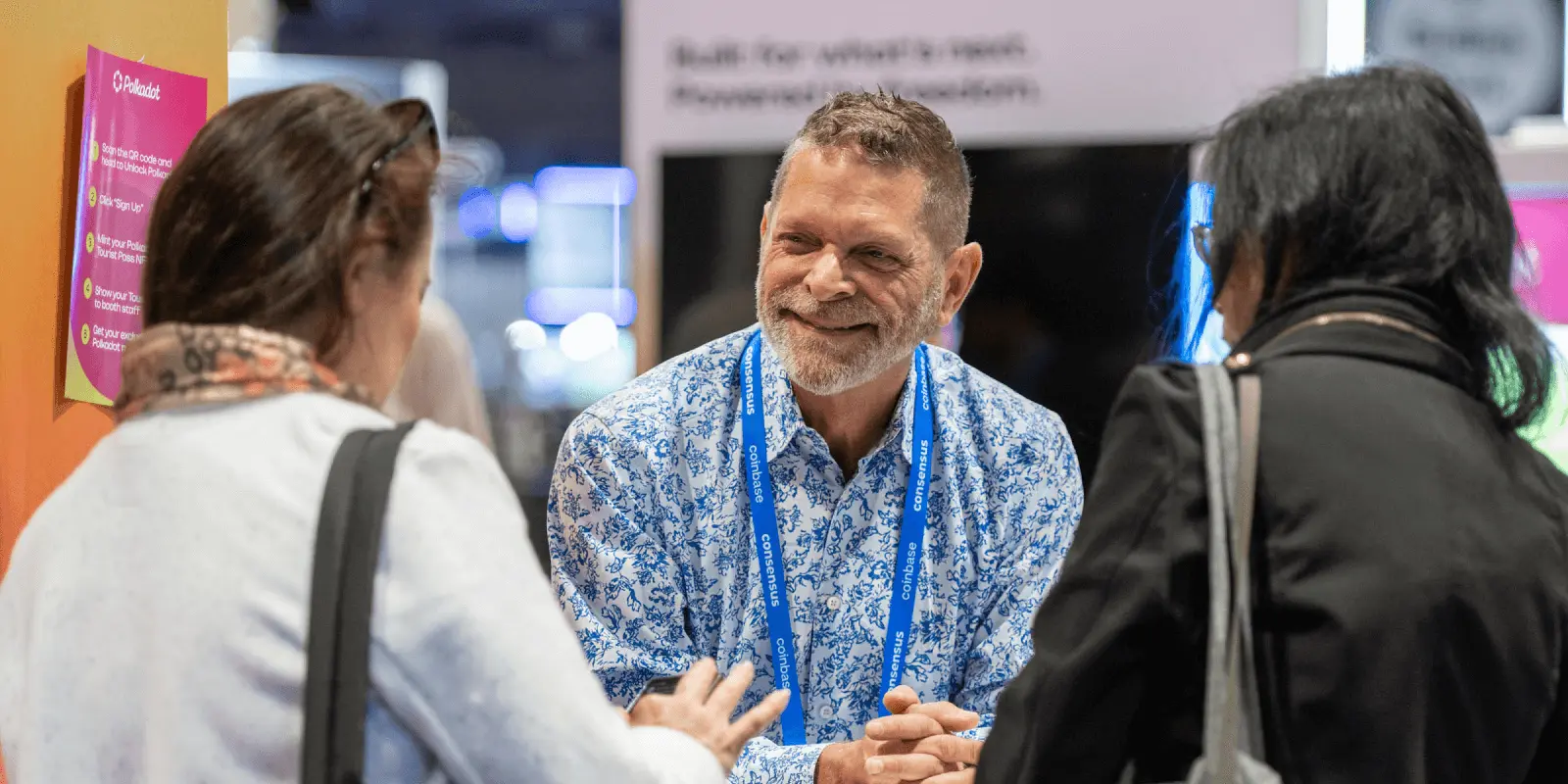
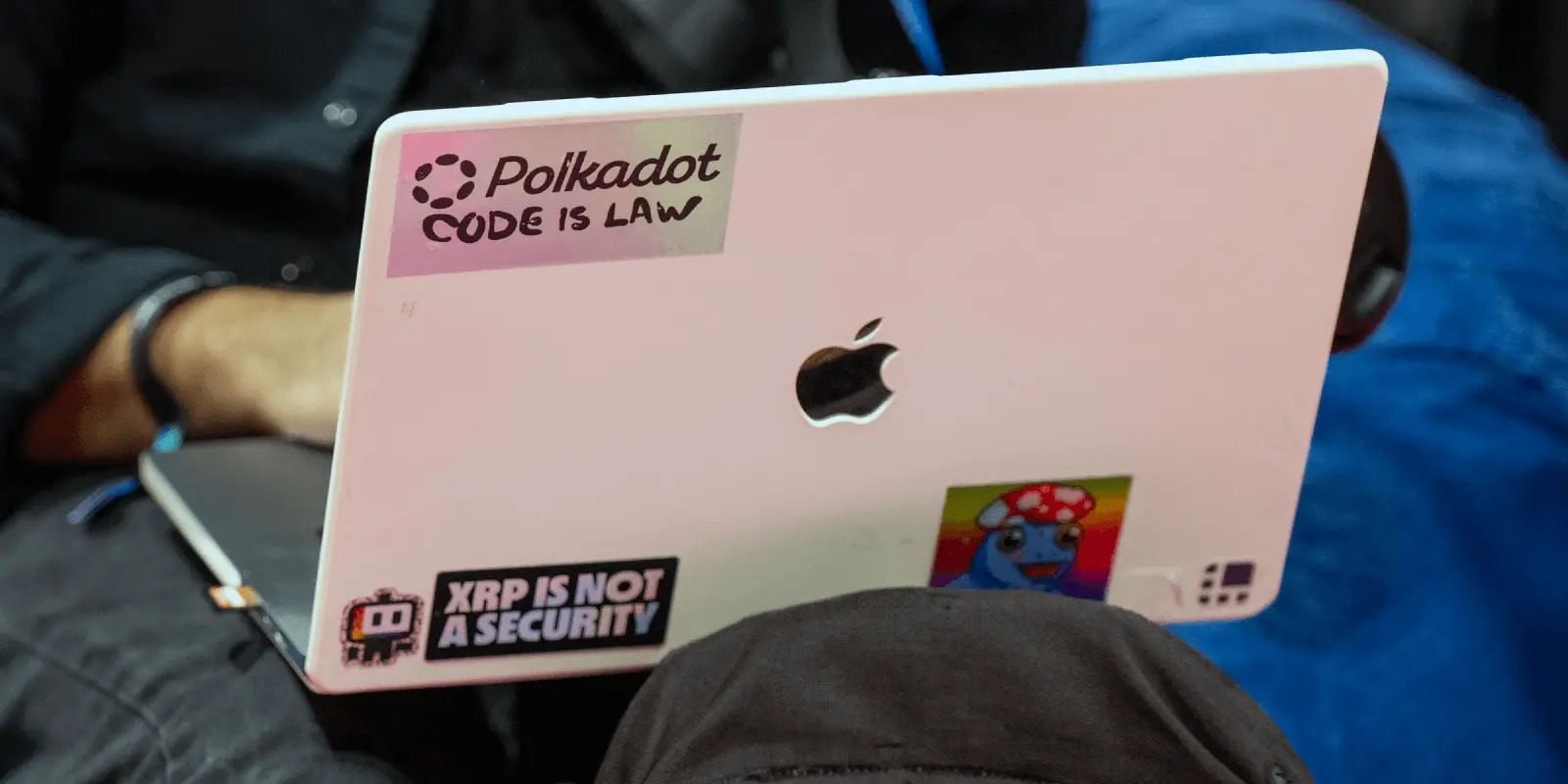

Social roundup
Some posts that captured the moment:
- @WomenInPolkadot: “The energy at the Polkadot bus has been unreal. Real convos, real connections.”
- @Polkadot: “Day 2 at #Consensus2025 is in full swing. Builders. Demos. DOT.”
- @joinwebzero: “429 Guests rocked Queen St. W last night.”
- @easya_app: “Record numbers of builders launched on @Polkadot at our EasyA @consensus2025 hackathon.”
Find more coverage and community posts at @Polkadot.
What’s next
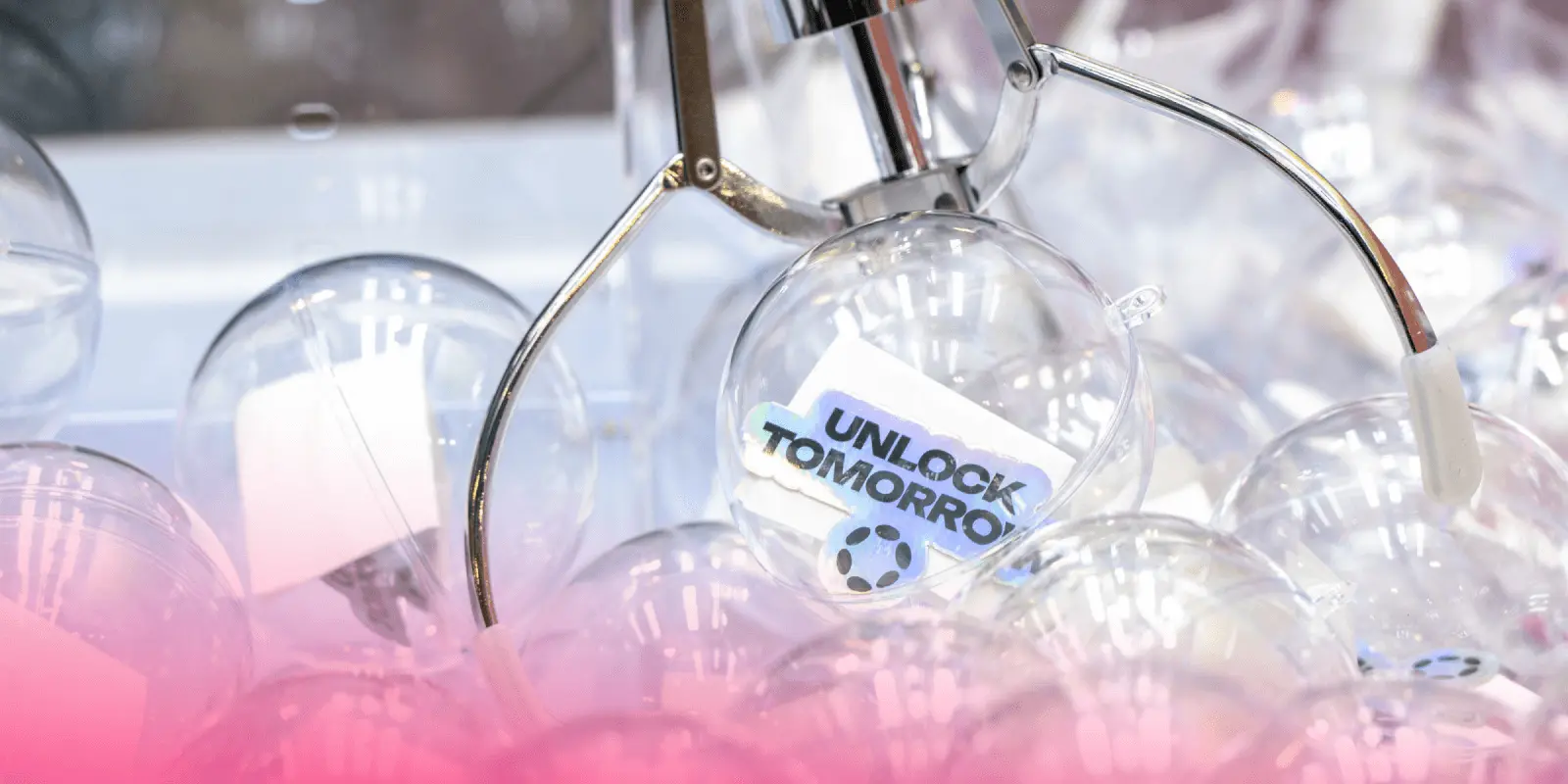
Consensus 2025 showed us what works. The booth format, messaging, and onboarding flow helped us connect with a broader audience and spotlight real-world projects across the ecosystem.
Next, we're building on this foundation. The goal is to support more ecosystem teams at global events by scaling the onboarding experience, improving on-site engagement, and continuing to highlight practical use cases.
From gaming to infrastructure to DAOs, the focus stays the same: real builders solving real problems with Polkadot.












